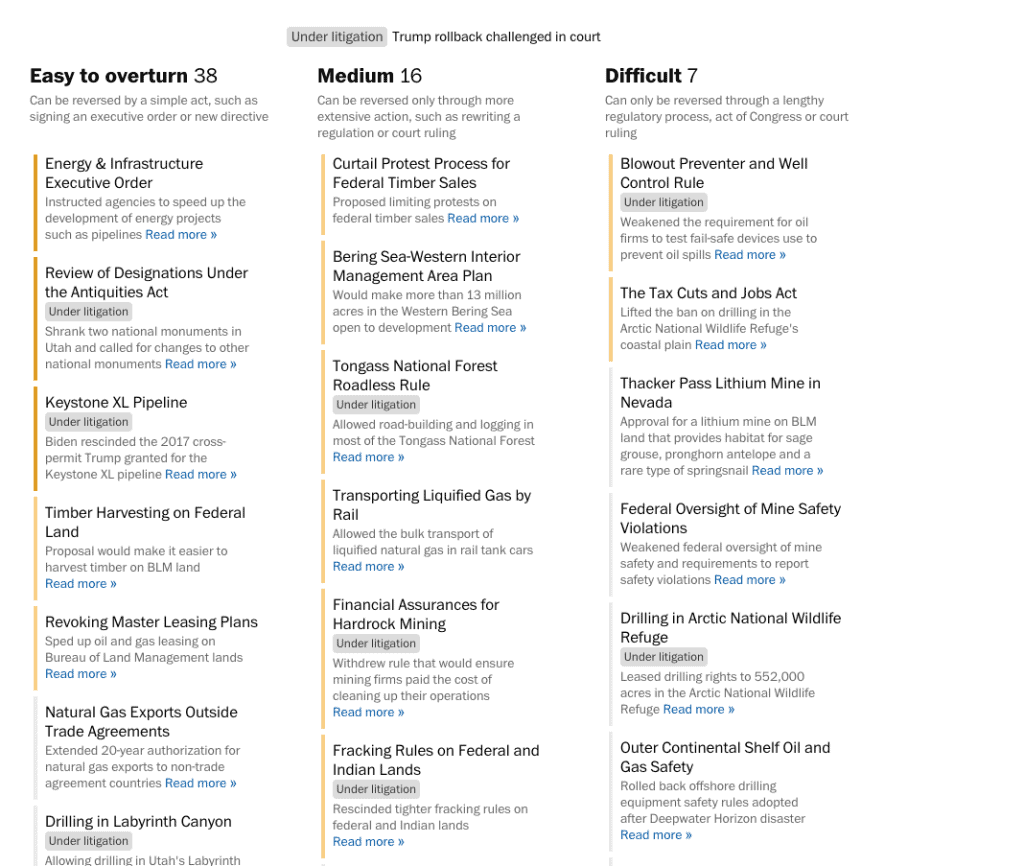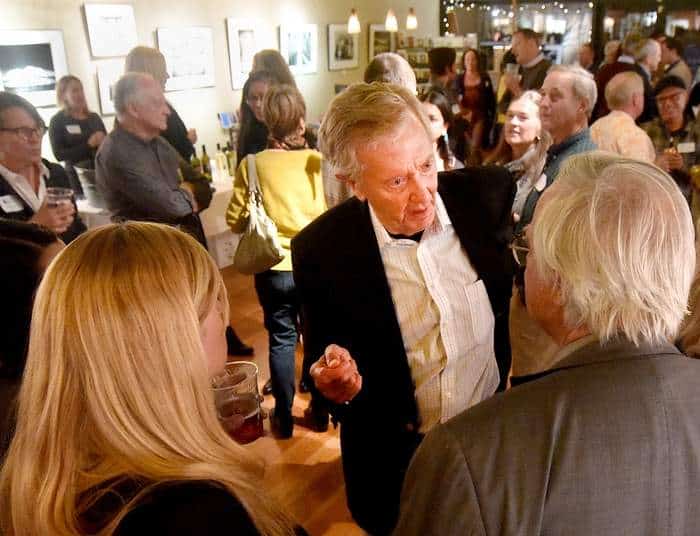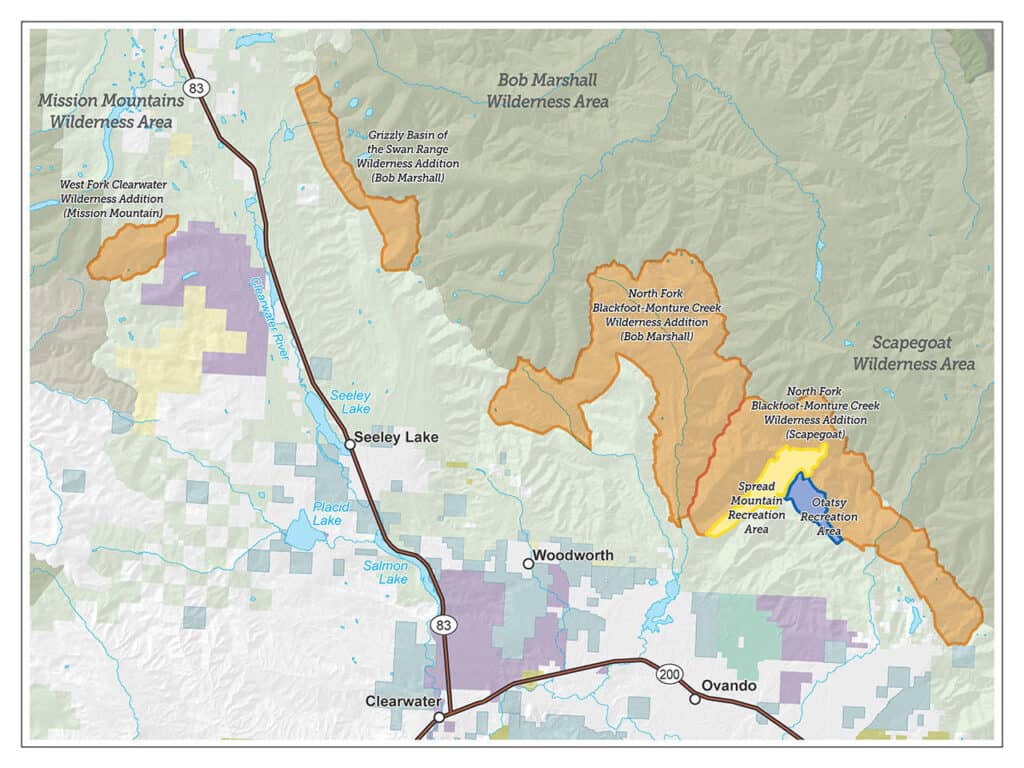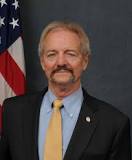In the comments from yesterday, Forrest Fleischmann mentioned this study, and I think it’s worth looking at the study a bit more.
What Forrest said in the comments was:
By contrast, local people living near federal lands in the US have very substantial political rights to express their opinions and participate in decision-making both through formalized processes (e.g. through NEPA and NFMA and associated public comment processes) and a wide variety of informal political processes at multiple levels (e.g. our recent research suggests that local politics has a fairly direct influence on agency decision-making beyond notice and comment procedures – https://academic.oup.com/jpart/advance-article-abstract/doi/10.1093/jopart/muab037/6364117). And local people in the US often exert leadership over decision making on forest lands because unlike in India, in the US individuals, tribes, and local governments own forest land, and also have various opportunities to exert leadership over the management of public land.
First, I’ll say that local decisions are not what I was originally talking about. I’m thinking more of national rules like Roadless or Planning. From the discussions in DC around the 2012 Planning Rule, I think local officials didn’t have much of a bite at the apple (although it was too complex for most to follow, probably). Bur originally I was speaking of things like Monument declarations and legislation (such as the potential Reconciliation bill or Wilderness bills) that do not take public comments and do not have EIS’s. These larger scale decisions (like not funding fuel treatments outside WUI) or keeping OHV’s out of newly Monumented areas, may have little local involvement (a trip by the Secretary of the Interior?). Projects can only occur within those larger decisions which seem to be made elsewhere. Like Washington D.C. for example, where issues tend to get scrunched into a partisan framing and often lack local or even regional context. George Hoberg at University of British Columbia tracked that back to the intentional nationalizing of issues by major ENGO’s around the time of the spotted owl intentionally to counter what was seen to be “pro-timber localism”.
Still, given that the study looks at more local kinds of decisions, let’s look at the abstract:
Research on political control over government bureaucracy has primarily focused on direct exercises of power such as appointments, funding, agency design, and procedural rules. In this analysis, we extend this literature to consider politicians who leverage their institutional standing to influence the decisions of local field officials over whom they have no explicit authority. Using the case of the US Forest Service (USFS), we investigate whether field-level decisions are associated with the political preferences of individual congressional representatives. Our sample encompasses 7,681 resource extraction actions initiated and analyzed by 107 USFS field offices between 2005 and 2018. Using hierarchical Bayesian regression, we show that under periods of economic growth and stability, field offices situated in the districts of congressional representatives who oppose environmental regulation initiate more extractive actions (timber harvest, oil and gas drilling, grazing) and conduct less rigorous environmental reviews than field offices in the districts of representatives who favor environmental regulation. By extending existing theories about interactions between politicians and bureaucrats to consider informal means of influence, this work speaks to (1) the role of local political interests in shaping agency-wide policy outcomes and (2) the importance of considering informal and implicit means of influence that operate in concert with explicit control mechanisms to shape bureaucratic behavior.
I think that this study may suffer from a current trend I’ve noticed in many other studies. The ability to use large datasets leads to conclusions that seem based on correlation without delving into any mechanisms for why the correlation might occur, nor testing different hypotheses about those proposed mechanisms. There’s also the question for such datasets, why is a given scale chosen? Some have argued that academic journals like worldwide conclusions best. Yet mechanisms may be different at different scales, as well as correlations. My old example is an economic one. If you close a mill in Forks, Washington, then that economy is impacted, but the economy of the State is not. So the answer you get depends on the scale you pick.
But let’s take it from the other end. Why do FS workers initiate “extractive” actions (are cattle and sheep really “extractive”?)
Oil and gas leasing and permitting is run by BLM and is leased by them based on a complicated process that we have discussed here, or you can read about on their website. Given that, we’d have to go back to BLM and see whether oil and gas leasing decisions are affected by local representatives. They can be, but that works both ways, to not lease or to lease; and which restrictions go where. This is something that would require further analysis to make a conclusion in my mind, because the BLM and FS can be quite different.
Many grazing leases are in the interior west. The interior west is full of Republicans. Ergo, Republicans want to extract and that’s the reason there are grazing leases. I would say not. Historically, the Interior West (not coastal here, I think that would require further analysis) has been an area with grazing (due to lack of water for food crops) and mining, including, as our minerals friends would say “fluid minerals.” Therefore, there are grazing leases, oil and gas leasing decisions, and mining decisions to be had. For some reasons, which only historians and political scientists can tell us, many local officials are Republicans (perhaps that’s what the authors meant by the coyly worded “congressional representatives who oppose environmental regulation.”) But there are not more grazing leases because there are Republicans.
Timber harvest is a different kettle of fish. As we can see here at TSW, the dynamics are very different in coastal states than in the Interior west. They’re probably even different in different parts of, say, California. It’s also super confusing as so many projects with timber harvest have a variety of purpose and needs, and the existence of mills and so on. If we just look at the handy Headwaters chart for states and volume of timber produced, we see that two heavily Democratic states have the highest volumes (328K cut California, 402K Oregon). It’s actually pretty interesting to take your State where you might know the Congressfolk involved and look at the forest volume sold. Of course, if we looked at the number of projects with a timber component, it might be different. let’s take fuels treatment projects with a timber component. For example, there were many bucks (and their own CE) associated with getting fuel treatment done around Lake Tahoe. Did all those bucks come due to Congressman McClintock? I think not. Indeed, the number of fuel treatment projects in each Congressional District is likely to be associated with how much money that unit gets passed down to them via the DC-Regional-Forest-District budgeting process.
As to “rigor of analysis” I’d say that all O&G decisions are likely to get litigated, so they’d all be pretty rigorous. Most grazing decisions are not (where I worked) so that would be a function of the local unit’s NEPA culture. As to vegetation treatments, it might be that the presence of environmental groups who might litigate and local officials of the “support environmental regulation” persuasion are correlated due to the presence of people in the community with those views. But would the FS “depth” of analysis be related to the likelihood of being litigated, or the presence of local officials of a given philosophical persuasion? I don’t know but it could be teased out via experimental design. Or I guess we could ask the people currently working how they decide.
My point is that correlation is not causation. To understand causation, we’d have to talk about specific mechanisms for “informal and implicit” means of influencing decisions. It seems like this is an increasingly common way to do research- take big data, on as large a scale as possible, and correlate. We’ll look at more of these studies in the future.







